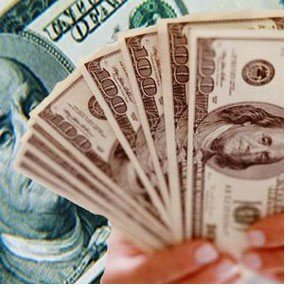Frank Rich had a great column yesterday, and now it’s Krugman today, basically cracking the same whip. Here’s Rich:
Even as we wait for Congress and its inquiry to produce results, the cultural toxins revealed by our economic crisis remain unaddressed by the leaders in the private and public sectors who might make a difference now. Blankfein may be giving $200 million to “education,” but Goldman is back to business as usual: making money by high-risk gambling, with all the advantages that the best connections, cheap loans from the Fed andhigh-speed trading algorithms can bring. As the Reuters columnist Rolfe Winkler wrote last week, “Main Street still owns much of the risk while Wall Street gets all of the profit.”
The idea of investing in the real economy — the one that might create jobs for Americans — remains outré in this culture. Credit to small businesses remains tight. The holy capitalist grail is still the speculative buying and selling of companies and the concoction of ever more esoteric financial “instruments.” The tragic tale of Simmons Bedding recently told in The Times is a role model. This successful 133-year-old manufacturing enterprise was flipped seven times in two decades by private equity firms. Investors made more than $750 million in profits even as the pile-up of debt pushed Simmons into bankruptcy, costing a quarter of its loyal workers their jobs so far.
He then goes on to mention the president of Harvard, despairing about the rise of business as the most popular undergraduate major, an issue near and dear to my own empty tangle of ventricles and atria heart. But this fixation with gambling, intertwined with instrumental financial exotica and a powerful ignorance for what any of it is about, is a kind of plague in its own right, moving to tear and sunder the mythical fabric of a nation as much any other virus or epidemic. A polity that does not serve itself will be under-served at critical points. We’re noticing several of these now. The idea that someone is doing this to us elides the actual dimensions of the problem, as if it appears to be the work of an outside force. Green is being redefined by the day – what it is, how it’s made, ways it can be lost – and you are compelled to have opinions on far more than merely what interests you. If you think this is a drag, just wait.
We – Americans – struggle with conflicting ideas about egalitarianism. That all are created equal is a strain that runs deep; that we must begin exploiting any differences from the next moment onward runs even deeper. But a fair shot at the virtues of capitalism is only possible with a revolver at 15 paces. There’s nothing else equal or just about it, because capitalism isn’t about virtue – that’s its primary feature. Many know and internalize this; many more perhaps do not. We may find ourselves at the mercy of the former, but this is because of the position they have been afforded in a society that rewards outlandish greed. Maybe, like its fossil fuel brethren, we have to educate ourselves and admit less of an affinity for greed and monetary alchemy. Maybe we decide there’s a few things about it that are unbecoming, that it may have unwelcome consequences that we should warn against. That money is better to use than to be used by. Green Money pervades, but once upon a time, in certain places it’s unadorned pursuit rang hollow.We may imagine such a place. And be better for it.


